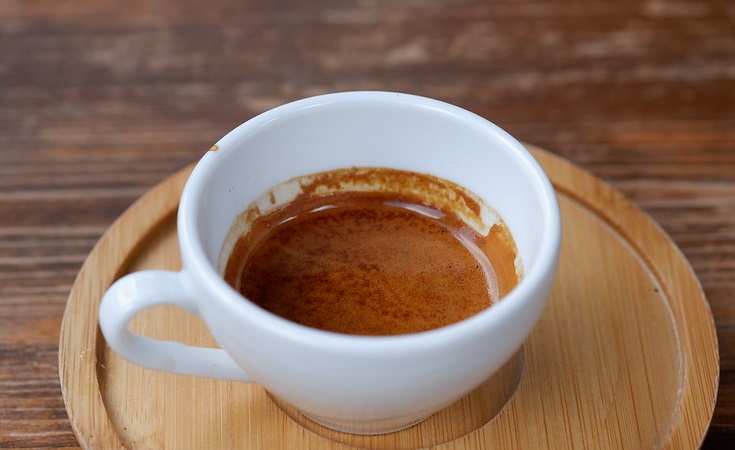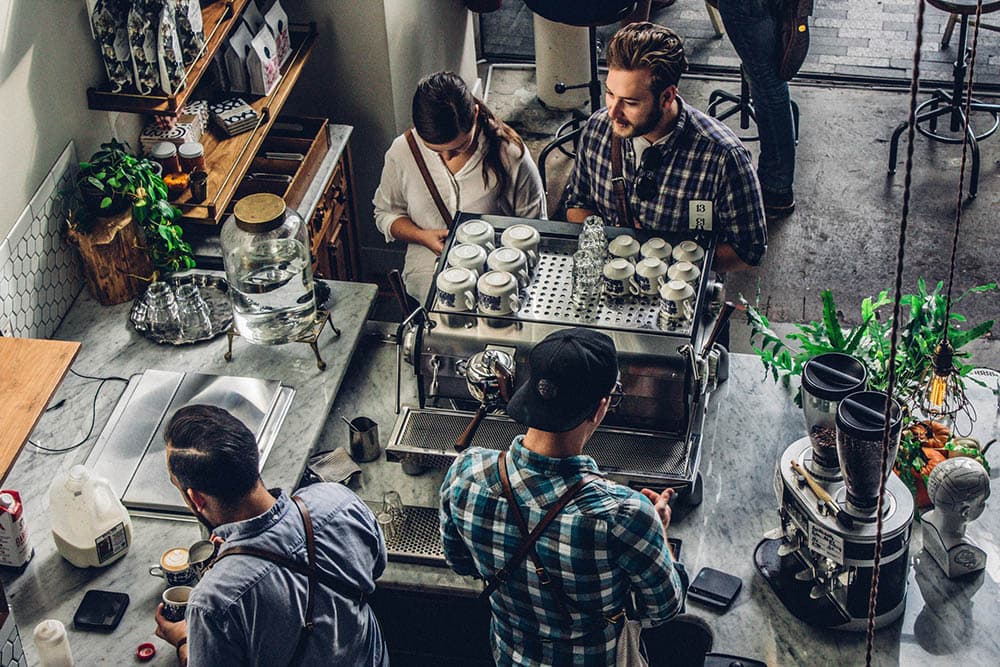
If you have finally gotten used to an espresso at your favorite coffee shop, you may have been thrown for a loop when you started seeing the ristretto shot making the rounds of popularity. This new espresso-like beverage is found more frequently on coffee menus, and it’s taking over some of our favorite coffee drinks.
So, what is this new beverage? If you have been wondering this yourself, we have the answer you are looking for below. We will share what it is, why it is different from espresso, and why it’s so popular.
Not only that, but we will also go over how to make it, and what coffee drinks you should be swapping out espresso for ristretto!

The Difference Between Espresso and Ristretto
We are all likely familiar with an espresso. It is the original “coffee drink”, and it’s the base of most brews like cappuccinos, lattes, Americanos, and long blacks. The ristretto, on the other hand, is very similar to espresso, but there is one main difference. The size.
Ristretto in Italian means “restricted”. What it essentially is is a shorter version of espresso. It’s about half. When it’s made, the barista will use less hot water with the same amount of coffee grinds to make a strong, yet mini espresso.
How a Ristretto Is Made
The difference between these two traditional Italian drinks (as we mentioned) is the extraction. Both coffees use the same amount of grinds, the same water temperature, and the same water pressure. The main difference, therefore, is the amount of water. This is typically done in one of two ways.
- First Procedure: The more common way to make a ristretto is to prepare it as if you were making an espresso, but pull it before all the water has been sent through the grinds. In essence, you would be pulling the first portion of the espresso — which we will talk about more later. The correct amount of water is about 15-25ml.
- Second Procedure: The second way it can be prepared is by grinding the beans to a finer consistency. This makes it more difficult for the water to push through. In turn, this gives you a smaller shot.

Another important note to keep in mind is that most people prefer a double ristretto. Although you might think this would make a very strong cup, this is not always the case.
The Uniqueness of a Ristretto
Now comes the fun part! What makes this “restricted” espresso special? The answer is in the flavor. Remember we mentioned pulling the “1st portion” of the espresso? This is done on purpose because the flavors and aromas of the coffee come at different times.
Let’s take flavor compounds, for example. Many of these notes dissolve quickly into the coffee and are overwhelmed by other flavors like bitterness. The crema is a good example of this as it is a somewhat sour and bitter addition to espresso. When the shot is pulled early, those notes stay intact for you to enjoy.
Not only is the ristretto more flavorful, but it’s also sweeter with less bitterness. Take a look at the flavor wheel. This is the order of the flavor as it is extracted from the coffee grinds.
- Mellow flavors
- Acidity
- Sweetness
- Balance
- Bitterness
As you can see, bitterness is the last “flavor” that goes into your cup when making an espresso. When making a ristretto, you are stopping the water early, so the majority of the bitterness is bypassed.
Acidity
Something else you may have noticed is the acidity is the second “flavor” to be extracted from the coffee. Many people confuse acidity with bitterness, but they are not the same. Expert coffee drinkers prefer their brew to have some acidity as it contains the more floral and fruity notes.
Bitterness, on the other hand, is usually due to over-processing or roasting. It is also the opposite of the sweetness, so without it, you will find the ristretto to be naturally sweeter. All in all, you want to shoot for balance within your ristretto.

How to Enjoy a Ristretto
Once again, balance is key with this coffee. Although it can be stronger, you will also find many of the finer notes can shine through. If you prefer less bold coffee, you may want to opt for a lighter roast. This can dull the boldness while retaining the sweet, floral, and fruity accents.
Another option is to add milk to your ristretto. Traditionally, it is enjoyed black without any extra ingredients. Pouring in a splash of milk will create a smooth brew, plus it also plays up the natural sweetness of the coffee. Those who typically prefer sugar in their coffee can usually drink this shot with only milk as it also has naturally sweet properties.
What to Avoid
There are a few things you want to avoid when it comes to this small espresso; especially if you are making it yourself. First, you want to avoid under extraction. This causes the brew to be sour and…not tasty. Under extraction is just as it sounds, as well. It is pulling the shot too early.
You will also want to play around with your coffee grind size and the amount of water you use. Each espresso machine is made differently, and your taste may lean towards the bold or the mild. Keep in mind, you are shooting for balance.
When Should You Order a Ristretto?
Like the espresso, you can order a ristretto straight up — as they say. You can sip it or take it back quickly, but be sure to look for those enhanced flavors. That being said, many coffee aficionados are swapping out espresso for ristretto in many of their go-to coffee drinks. Let’s take a look at some of the most common.
- Cappuccino: This is a good option for a swap if you like a sweeter cup in the afternoon. The milk, along with the sweeter shot, will add some life to the traditional drink.
- Long Black: This is another beverage where a lot of people are making the switch. If you prefer black coffee, you will be able to taste more of the flavors without compromising your brew with other ingredients.
- Macchiato: In this case, we are talking about the traditional brew versus the Starbucks version. Again, this is a great way to add some sweetness and additional flavor.

Besides those few drinks, you can also exchange an espresso for a ristretto in a latte, Americano, Cortado, and many more. There is also something to be said for making a ristretto out of coffees where you already detect notes of tropical fruit, chocolate, caramel, and other subtle hints that would be better served in a more concentrated brew.

Conclusion
There is nothing that says you have to swap out your espresso for a ristretto today, but next time you order your favorite coffee drink, give it a try. You may be surprised at the different flavors you get from the same coffee you have always enjoyed. We hope this article has answered all of your questions and given you all the info to make your next order.
RELATED READS:
- Ristretto vs Espresso: What’s the Difference?
- What is Lungo Coffee?
- Why Are Espresso Machines So Expensive?
Featured Image: Vee Satayamas, Flickr















